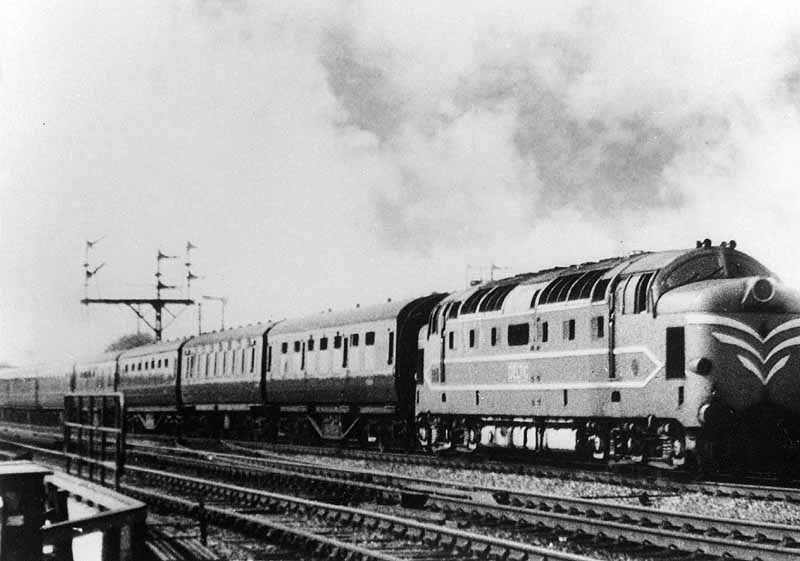|
|
 |
 |
|
London North Western
Railway:

Midland
Railway:

Stratford
Midland Junction Railway
|

|
LMS Route: Trent Valley Line
LMS Route: Nuneaton to Leamington
Nuneaton Station: lnwrns1652
 |
English Electric Company's experimental Co-Co diesel prototype
is seen at the head of an up express as it passes the junction for the Ashby
branch line. Unofficially designated DP1 - 'Diesel Prototype One' - the 3,300hp
prototype was sponsored by the company in order to assess their marine
Napier-Deltic engine for rail use. The widespread use of alloy in its
construction led to a comparatively lightweight high rpm diesel engine which
could be mounted on a Co-Co wheelbase. The prototype was intended to be called
Enterprise, but the name was dropped when it was found that Hudswell Clarke of
Leeds had a range of locomotives bearing the same name. As a result, the
English Electric Company's prototype became known as Deltic, derived from the
'V' shape of the engine resembling that of the inverted Greek letter 'Delta'.
This unique locomotive was powered by two Napier motor gunboat engines, and
made its debut on the WCML in December 1955. It was the most powerful
locomotive then in existence. It was also extremely light, weighing a mere 106
tons, mounted on a Co-Co wheel arrangement which allowed for 100mph running
without causing wear and tear on the track as did the cumbersome 1Co-Co1
machines that came before before it. The English Electric Company clearly had
export potential in mind for the distinctive American-style nose end and
non-functional headlight were a prominent feature. So too was the Nankin blue
livery, straw lining and speed whiskers - and, of course, there was the sweet
sound of its engines.
Courtesy of
David
Hey.
 back back

|
|
|
